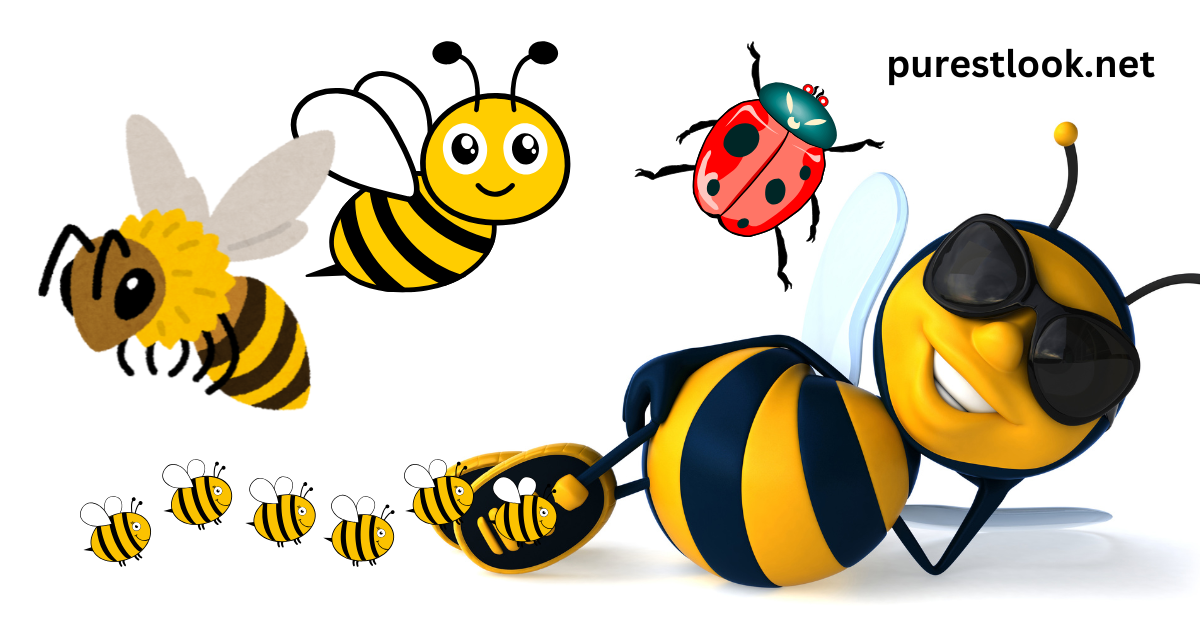Bees are vital to life on Earth, but what did they look like in the past? From their earliest ancestors to the bees we know today, these incredible insects have undergone fascinating changes. This article uncovers the evolution of bees, exploring how their appearance, size, and behavior have transformed over millions of years.
The Origins of Bees
Bees trace their ancestry back over 100 million years to wasp-like creatures. These early bees likely evolved from predatory wasps, gradually adapting to feed on nectar and pollen instead of other insects.
What Did Ancient Bees Look Like?
Ancient bees were different from modern honeybees. They were solitary, larger, and less specialized, with physical traits that reflected their close relationship to wasps.
- Body Structure: Early bees had a more robust, wasp-like appearance.
- Wings: Their wings were larger relative to their bodies, aiding in long-distance flights.
- Legs: Unlike modern bees, ancient bees lacked the specialized pollen baskets used for carrying pollen.
The Evolution of Bee Species
Over millions of years, bees adapted to different environments and plants, leading to the diversity of species we see today.
Adaptations Over Time
Bees developed specialized features to help them collect and transport pollen more efficiently.
- Hairy Bodies: Modern bees evolved tiny hairs on their bodies to trap pollen.
- Pollen Baskets: Bees like honeybees and bumblebees developed structures on their hind legs to carry pollen.
- Coloration: Bees evolved colors that helped them blend into flowers or warn predators of their stings.
Table: Comparison of Ancient and Modern Bees
| Feature | Ancient Bees | Modern Bees |
|---|---|---|
| Size | Larger, more robust | Smaller, more streamlined |
| Behavior | Solitary | Social in many species |
| Pollen Transport | None | Specialized pollen baskets |
| Habitat | Forests and grasslands | Wide variety, including urban |
Bee Fossils: A Window to the Past
Fossil evidence provides crucial insights into what ancient bees looked like.
- Oldest Bee Fossils: Fossils dating back 100 million years reveal primitive bees preserved in amber.
- Key Discoveries: Fossilized bees from Myanmar’s amber deposits show wasp-like ancestors with both predatory and pollen-collecting traits.
The Role of Bees in Ancient Ecosystems
Ancient bees played a vital role in pollinating early flowering plants, helping them spread and diversify. This mutualistic relationship shaped the world’s ecosystems, laying the foundation for the rich biodiversity we see today.
FAQs About What Bees Used to Look Like
What did bees look like millions of years ago?
Ancient bees resembled wasps, with larger bodies, robust features, and no specialized structures for carrying pollen.
How did ancient bees differ from modern bees?
Ancient bees were solitary and lacked the social behaviors and physical adaptations, like pollen baskets, seen in many modern species.
What is the oldest known bee fossil?
The oldest bee fossil is about 100 million years old, discovered in amber deposits from Myanmar.
How have bees evolved over time?
Bees evolved from predatory wasps, developing adaptations like pollen baskets, hairy bodies, and social behaviors to thrive as pollinators.
Why are ancient bees important to study?
Studying ancient bees helps us understand their evolution, role in ecosystems, and the development of biodiversity on Earth.
Conclusion
Bees have undergone remarkable changes over millions of years, evolving from solitary wasp-like ancestors into the diverse and essential pollinators we rely on today. By understanding what bees used to look like, we gain insight into their evolutionary journey and the critical role they play in our planet’s ecosystems. Bees continue to be a symbol of nature’s adaptability and the interconnectedness of all life.
